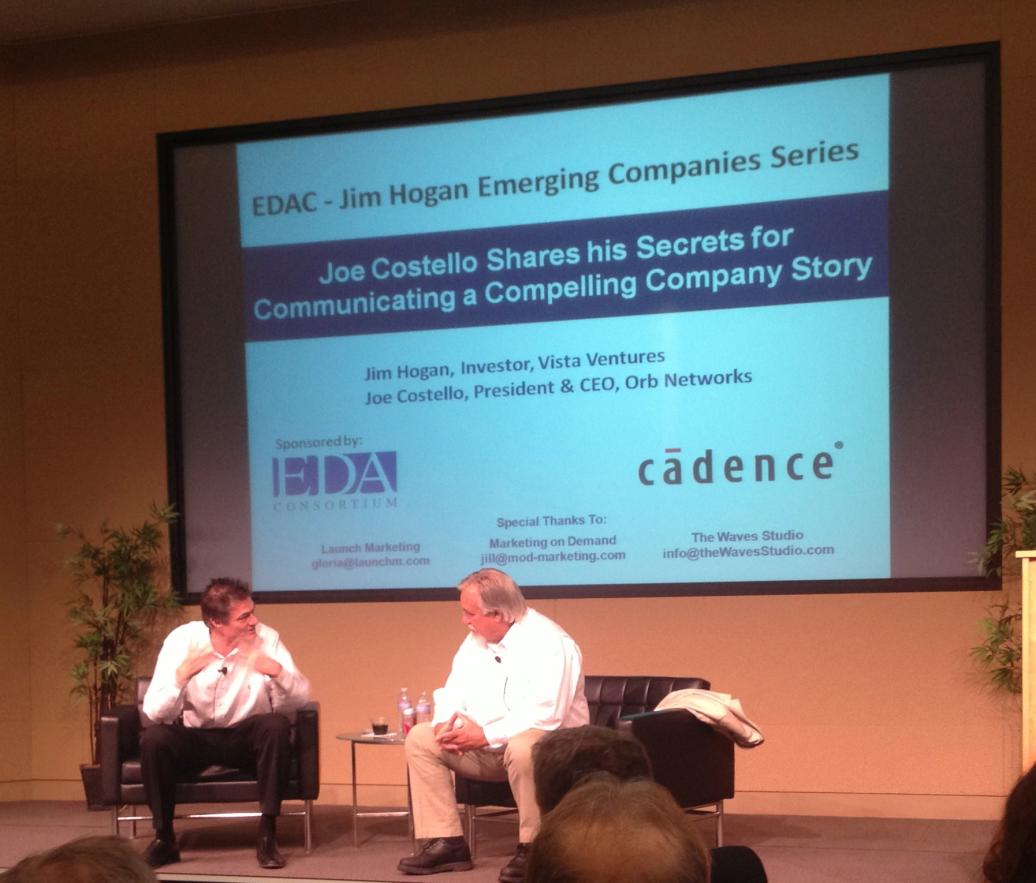 Last night at Cadence was the next installment of what I have been calling Hogan University. Jim interviewed Joe Costello about how to tell a story as part of the EDAC emerging companies series of events. The main focus was how to tell a story as a small EDA company communicating with investors, although there are obviously other forms of communication. I’m assuming that if you are reading SemiWiki that you know that Joe Costello was CEO of Cadence for many years, taking it from its birth as a merger of ECAD and SDA to a big EDA company (I think over $1B by the time he left).
Last night at Cadence was the next installment of what I have been calling Hogan University. Jim interviewed Joe Costello about how to tell a story as part of the EDAC emerging companies series of events. The main focus was how to tell a story as a small EDA company communicating with investors, although there are obviously other forms of communication. I’m assuming that if you are reading SemiWiki that you know that Joe Costello was CEO of Cadence for many years, taking it from its birth as a merger of ECAD and SDA to a big EDA company (I think over $1B by the time he left).
Rather like in his keynote at DAC a few years ago, Joe tried to distill things down into some rules (some of them the same rules even).
So rule #1, if you want to tell a compelling story then you have to have a compelling story. You can mess up a good story by the way you tell it, but you can’t make a poor idea good by the way you tell it. The biggest failure in pitching to investors is not how you tell it, it is just that your story is not compelling. “The common cold is interesting but smallpox is compelling.”
Rule #2, which also was one of the keynote rules and clearly everyone who worked for Joe had already heard: write the press release first. It will never sound better when it is just a dream and you haven’t had to make any compromises in implementation. So if it doesn’t sound good as a press release then…maybe time to think again (“pivot” in current VC terminology).
Rule #3 is to look at things from the point of view of the investors you are pitching to. This is a bit like the “think like a fish” rule at Joe’s keynote that had him lying on the stage pretending to be a fish. You might want to create a company to change the world, or to experience a startup, or to follow your dreams. Investors mostly want to make money, but they also have other agendas (like looking good to their partners or expanding into whatever all the other VCs are investing in that week). Yes, they want to see passion, but mostly because passion means you are more likely to make the effort necessary to succeed.
Rule #4 is to be yourself, don’t try and imitate Steve Jobs (or Joe Costello) in the way you present. You have to own your story and do it the way you want. Oh, and don’t use slides except for a few pictures/graphs. Joe didn’t mention it but there is actually a lot of research that shows that if your slides are basically bullet points that tell the whole story then they detract, not add, to your presentation. Just use slides to add graphics and emotion to what you are saying (watch any Jobs keynote to see the master at work, no bullet points to be seen). Or don’t use them at all.
Rule #5 is that you need to get to the emotional needs of whoever you are pitching to. Break up logical thinking with humor, oddball facts and tangential stuff. And no slides with bullet points (see above).
Here is an interesting point I’d never heard before. Intel pays more to PG&E for simulation than it pays the entire EDA industry for all the simulators they use. And they don’t even bitch about electricity prices.
When Joe left Cadence, apparently he interviewed with Jobs to be CEO of Apple. Steve eventually said that he only had experience selling very geeky stuff to very geeky companies. He had no experience selling to consumers. Joe tried to point out that every developer is a human being and has to be sold to. I guess Jobs wasn’t convinced since Joe didn’t get the job.
With that, it was time for us all to go home.
Share this post via:









Quantum Computing Technologies and Challenges